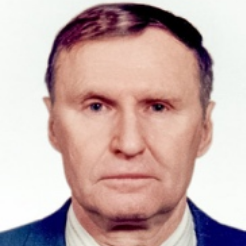International Journal of Information Technology and Computer Science (IJITCS)
IJITCS Vol. 16, No. 4, 8 Aug. 2024
Cover page and Table of Contents: PDF (size: 468KB)
Enhancing Healthcare Provision in Conflict Zones: Queuing System Models for Mobile and Flexible Medical Care Units with a Limited Number of Treatment Stations
PDF (468KB), PP.96-104
Views: 0 Downloads: 0
Author(s)
Index Terms
Mobile Medical Care Unit, Flexible Medical Care Unit, Treatment Station, War, Modeling, Simulation, Optimization
Abstract
We address the challenge of optimizing the interaction between medical personnel and treatment stations within mobile and flexible medical care units (MFMCUs) in conflict zones. For the analysis of such systems, a closed queuing model with a finite number of treatment stations has been developed, which accounts for the possibility of performing multiple tasks for a single medical service request. Under the assumption of Poisson event flows, a system of integro-differential equations for the probability densities of the introduced states has been compiled. To solve it, the method of discrete binomial transformations is employed in conjunction with production functions. Solutions were obtained in the form of finite expressions, enabling the transition from the probabilistic characteristics of the model to the main performance metrics of the MFMCU: the load factor of medical personnel, and the utilization rate of treatment stations. The results show the selection of the number of treatment stations in the medical care area and the calculation of the appropriate performance of medical personnel.
Cite This Paper
Anatoliy Litvinov, Dmytro Chumachenko, Nataliia Dotsenko, Iryna Kadykova, Igor Chumachenko, "Enhancing Healthcare Provision in Conflict Zones: Queuing System Models for Mobile and Flexible Medical Care Units with a Limited Number of Treatment Stations", International Journal of Information Technology and Computer Science(IJITCS), Vol.16, No.4, pp.96-104, 2024. DOI:10.5815/ijitcs.2024.04.07
Reference
[1]Snyder, T.: Integration and Disintegration: Europe, Ukraine, and the World. Slavic Review. 74, 695–707 (2015). https://doi.org/10.5612/slavicreview.74.4.695.
[2]Poberezhets, V.: Healthcare crisis in Ukraine – worrying consequences of the Russian-Ukrainian war. Croatian Medical Journal. 63, 315–316 (2022).
[3]Akinwunmi, A.O., Aworinde, H.O., Adebayo, S., Akinpelu, J.A.: Geospatial Cloud-Based Model for Mitigating Impact of Natural Disaster and Security Threats using Smart Digital Devices. International Journal of Wireless and Microwave Technologies. 13, 23–36 (2023). https://doi.org/10.5815/ijwmt.2023.02.03.
[4]Lotfi, F., Fatehi, K., Badie, N.: An Analysis of Key Factors to Mobile Health Adoption using Fuzzy AHP. International Journal of Information Technology and Computer Science. 12, 1–17 (2020). https://doi.org/10.5815/ijitcs.2020.02.01.
[5]ICRS: Mobile HealtH units methodological approach. (2006).
[6]Malone, N.C., et al.: Mobile health clinics in the United States. International Journal for Equity in Health. 19, (2020). https://doi.org/10.1186/s12939-020-1135-7.
[7]Dotsenko, N., Chumachenko, D., Chumachenko, I., Galkin, A., Lis, T., Lis, M.: Conceptual Framework of Sustainable Management of the Process of Forming a Project Team with Functional Redundancy. Energies. 14, 8235 (2021). https://doi.org/10.3390/en14248235.
[8]Alakbarov, R.G., Pashaev, F.H., Alakbarov, O.R.: Forecasting Cloudlet Development on Mobile Computing Clouds. International Journal of Information Technology and Computer Science. 9, 23–34 (2017). https://doi.org/10.5815/ijitcs.2017.11.03.
[9]O. Justice, E., J. Olusegun, A., N. Ozichi, E.: Development and Evaluation of Mobile Telenursing System for Drug Administration. International Journal of Information Engineering and Electronic Business. 12, 40–52 (2020). https://doi.org/10.5815/ijieeb.2020.04.05.
[10]Isong, B., Dladlu, N., Magogodi, T.: Mobile-Based Medical Emergency Ambulance Scheduling System. International Journal of Computer Network and Information Security. 8, 14–22 (2016). https://doi.org/10.5815/ijcnis.2016.11.02.
[11]Ding, C., Bai, Y., Fang, Y., Huang, F., Arashpour, M.: A Focused Review of Modular Construction for Medical and Quarantine Facilities. Journal of Architectural Engineering. 28, (2022). https://doi.org/10.1061/(asce)ae.1943-5568.0000565.
[12]Chen, Y., Lai, Z.: A Multi-Objective Optimization Approach for Emergency Medical Service Facilities Location-Allocation in Rural Areas. Risk Management and Healthcare Policy. Volume 15, 473–490 (2022). https://doi.org/10.2147/rmhp.s332215.
[13]Abujaber, N., Alajlan, S., Jordan, G., Abujaber, S., Vallieres, F.: Towards a comprehensive framework for the design and implementation of agile Mobile Health Units in humanitarian crises: A case study in Northwestern Syria. International Journal of Disaster Risk Reduction. 66, 102604 (2021). https://doi.org/10.1016/j.ijdrr.2021.102604.
[14]Bowsher, G., et al.: eHealth for service delivery in conflict: a narrative review of the application of eHealth technologies in contemporary conflict settings. Health Policy and Planning. 36, (2021).
[15]Syahrir, I., Suparno, Vanany, I.: Healthcare and Disaster Supply Chain: Literature Review and Future Research. Procedia Manufacturing. 4, 2–9 (2015).
[16]Marić, J., Galera-Zarco, C., Opazo-Basáez, M.: The emergent role of digital technologies in the context of humanitarian supply chains: a systematic literature review. Annals of Operations Research. 319, (2021). https://doi.org/10.1007/s10479-021-04079-z.
[17]Tatham, P., Kovács, G.: The application of “swift trust” to humanitarian logistics. International Journal of Production Economics. 126, 35–45 (2010).
[18]Lotfi, T., et. al.: Coordinating the Provision of Health Services in Humanitarian Crises: a Systematic Review of Suggested Models. PLoS Currents. 8, (2016).
[19]Naidoo, M., Naidu, P., Shrime, M.G., Chu, K.M.: Humanitarian surgical care delivery: lessons for global surgical systems strengthening. Journal of Public Health and Emergency. 4, 22–22 (2020). https://doi.org/10.21037/jphe-20-79.
[20]McGowan, C.R., et al.: Mobile clinics in humanitarian emergencies: a systematic review. Conflict and Health. 14, (2020).
[21]Haar, R.J., et al.: Violence against healthcare in conflict: a systematic review of the literature and agenda for future research. Conflict and Health. 15, (2021).
[22]Kendall, D.G., Riordan, J.: Review of Stochastic Service Systems. The Annals of Mathematical Statistics. 35, 917–919 (1964).
[23]Jaiswal, N.K.: Priority Queues. Academic Press (1968).




